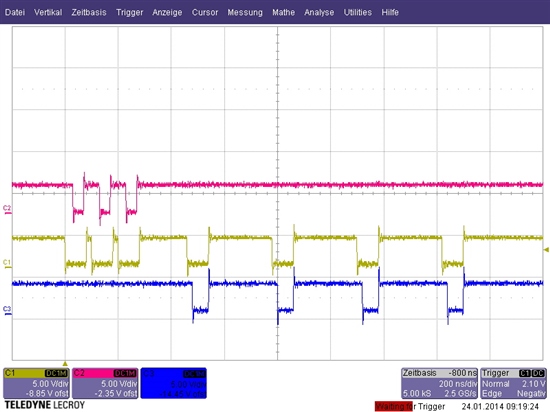Hi,
We use the GPMC module in the AM3357 accessing an asynchronous Dual Port RAM (16Bit databus).
We write three values as you can see below:
//### Test
*((volatile unsigned short *)(0x09000004))=0x0001;
*((volatile unsigned short *)(0x09000006))=0x0002;
*((volatile unsigned short *)(0x09000008))=0x0003;
//asm(" DMB");
//### Test Ende
The writes itself work as it should. If we watch the signals on an oscilloscope we see that the chip select signals goes low for 8 times and only for the expected 3 times the WEn signal goes low. We would expect the chip select signal to go low only 3 times.
If I change the code to the following...
//### Test
*((volatile unsigned short *)(0x09000004))=0x0001;
asm(" DMB");
*((volatile unsigned short *)(0x09000006))=0x0002;
asm(" DMB");
*((volatile unsigned short *)(0x09000008))=0x0003;
asm(" DMB");
//### Test Ende
...I can see the expected number of low cycles of the chip select signal.
Does anyone from TI has an idea why this happens? Is this a bug within the GPMC module?
Thanks and best regards,
Patrick



